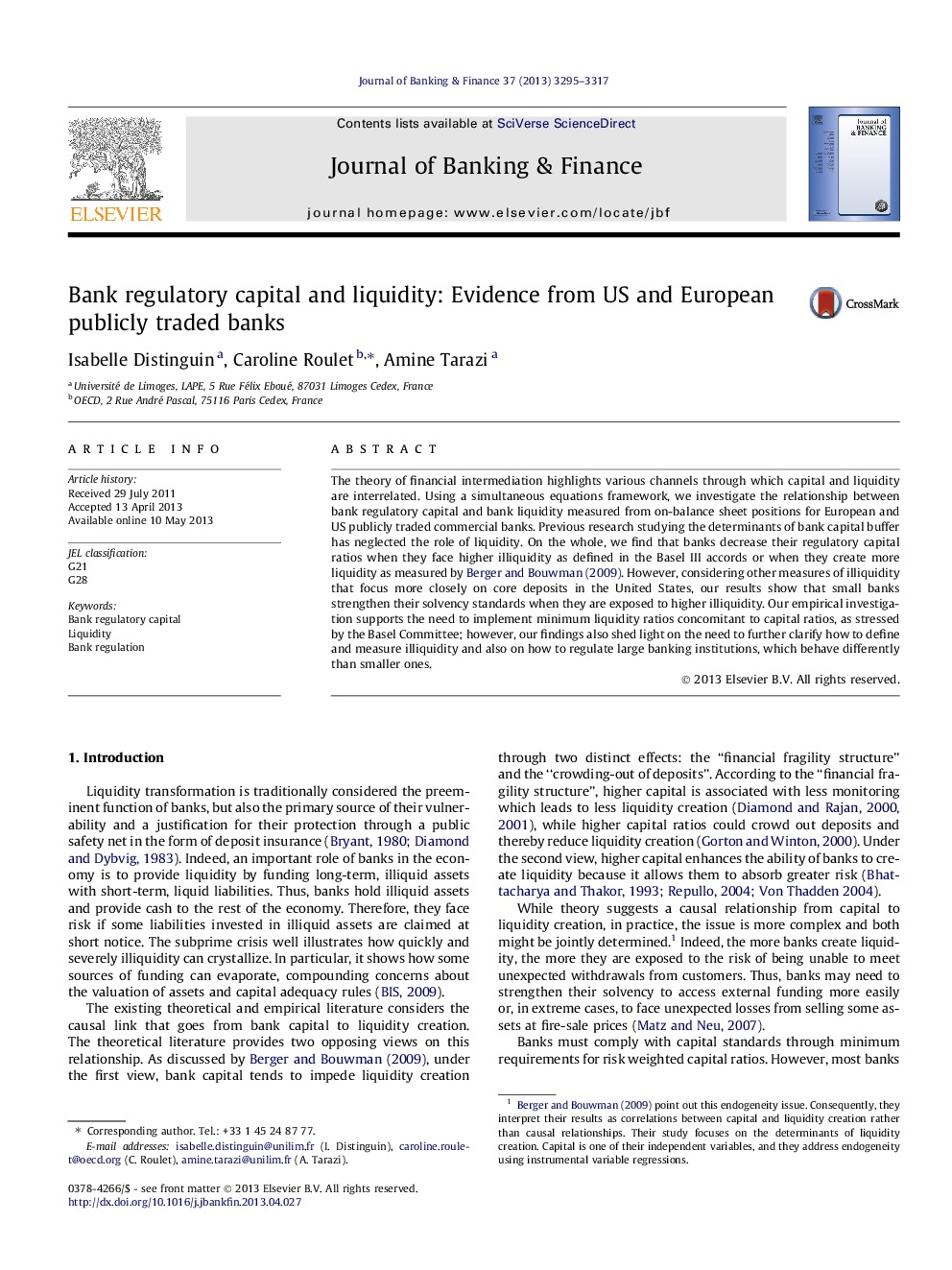| Article ID | Journal | Published Year | Pages | File Type |
|---|---|---|---|---|
| 5089528 | Journal of Banking & Finance | 2013 | 23 Pages |
â¢Relationship between bank regulatory capital and liquidity.â¢We focus on European and US publicly traded commercial banks.â¢Banks decrease their capital under higher illiquidity as defined in Basel III.â¢In the US, we also focus on core deposits to measure illiquidity.â¢Small US banks strengthen their solvency standards under higher illiquidity.
The theory of financial intermediation highlights various channels through which capital and liquidity are interrelated. Using a simultaneous equations framework, we investigate the relationship between bank regulatory capital and bank liquidity measured from on-balance sheet positions for European and US publicly traded commercial banks. Previous research studying the determinants of bank capital buffer has neglected the role of liquidity. On the whole, we find that banks decrease their regulatory capital ratios when they face higher illiquidity as defined in the Basel III accords or when they create more liquidity as measured by Berger and Bouwman (2009). However, considering other measures of illiquidity that focus more closely on core deposits in the United States, our results show that small banks strengthen their solvency standards when they are exposed to higher illiquidity. Our empirical investigation supports the need to implement minimum liquidity ratios concomitant to capital ratios, as stressed by the Basel Committee; however, our findings also shed light on the need to further clarify how to define and measure illiquidity and also on how to regulate large banking institutions, which behave differently than smaller ones.
